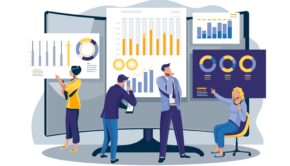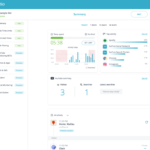The Complete Guide to Building Buyer Personas
Buyer personas are something of a mystery if you’ve never used them before. After all, how can you possibly know enough about your audience to boil them down into a couple fictional people? Even if you could, how does this help your business and your marketing?
Today I’m going to show you how buyer personas can evolve your marketing efforts. We’ll follow this with a simple, four-step process for building the ideal personas that represent your audience.
Why Are Buyer Personas Important & Useful?
Regardless of what type of business you own, having buyer personas is crucial to understanding your audience. Each of the “personas” you build will be based on real information you’ve gathered that builds a concept of what your average customer is like.
Not only average, but your personas will also help you define the ideal buyer for your product or service. They will be build on information you’ve gathered, but you’ll also incorporate your own experiences with customers in the past and the experiences of those in your team.
Depending on your industry, you could have one or two personas, but some will require more. It’s also possible to build a persona based on the kind of customer you don’t want. This would be someone who isn’t a good fit for your brand for one reason or another.
The purpose of these profiles, is to understand how you can personalize your marketing to meet the various needs of your audience. A perfect example is segmenting your email subscribers based on how they fit into your personas and sending personalized emails based on that information.
How to Build Buyer Personas For Your Audience
The best way to get started with this, is to consider an example. For the purposes of our process here, let’s say that you’re a business that helps people by showing them proven strategies for repairing and building up their credit.
This is an industry that will require multiple personas for the different types of situations that people find themselves in with finances and credit repair. Let’s take a look at how we could build personas for this business.
Step One: Conducting Interviews
To get your baseline, you need to start by going to the source: your customers. Conducting interviews is a great way to get some real feedback that you can use to begin the process. It’s important that you reach out to people who were both happy and disappointed with the product because both will have valuable information to share.
Here are some tips for interviewing your customers:
- Target recent customers
- Call them and then follow up via email
- Give them an idea of the questions beforehand so they can respond accurately
- Practice with your team first
- Ask for permission to record the interview
- Thank them at the end for their feedback
- Don’t cut them off, let them talk as long as they’d like
Doing these interviews will give you ideas of what works and and what could improve. The most important to ask during this time you have is why they feel a certain way, so you understand their motivations.
In addition, you should also ask them about the challenges they face, which will give you insight into how your product or service could benefit them.
Step Two: Doing Your Research
Once you’ve spoken with your customers, you can start to build an idea of what your typical persona should look like. You’ll want to start with demographic information, which can be gathered via online surveys if you’d prefer not to ask the person themselves.
Consider things like gender, age, living situation, and their current job or family size. These things give you everything you need to get a picture of them in your mind. The next step is to modify your capture fields so you’re requesting information that you need to better understand your audience.
This is also a good time to look at specific page analytics to see how your visitors are consuming the content you offer them. What’s working, and what’s not will show you what your customers are interested in, and ultimately reveal what motivates them.
Step Three: Bringing Everything Together
So, you’ve spoken to your customers and you’ve done research into their lives and what they want out of your product. It’s time to put everything together into broad personas that you and your team can use.
Incorporate these things into each persona you create:
- A fictional name (so you can identify with them)
- Gender
- Age
- Family size
- Location
- Hobbies/interests
- Challenges
- Goals
- How your product/service can help them in their lives.
This way, you can communicate effectively with them as if you’re one of their close friends. Utilizing your personas will help you grow on social media, and your business will grow as a result.
Final Thoughts
Buyer personas are an incredibly useful tool for marketers to better communicate with their customers and their audience. How do you build these types of personas for your business? Let us know in the comments!
About the author:
Divya Thacker is a digital marketer with over a decade of experience building buyer personas and understanding the audience of her business.









![Business growth with Social Media [Infographic]](https://technofaq.org/wp-content/uploads/2017/01/Business-growth-with-Social-Media-150x150.jpg)






